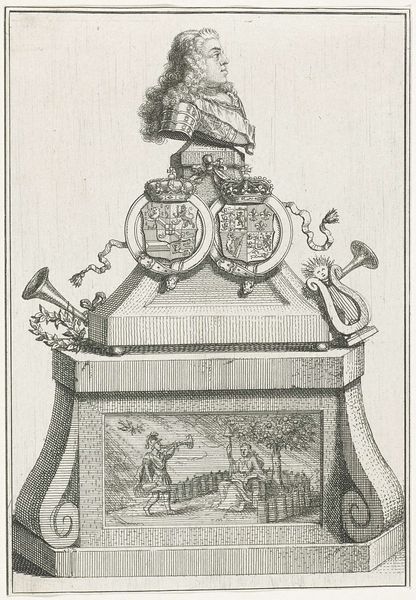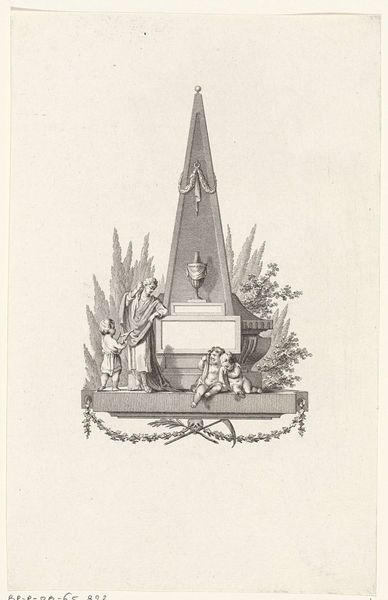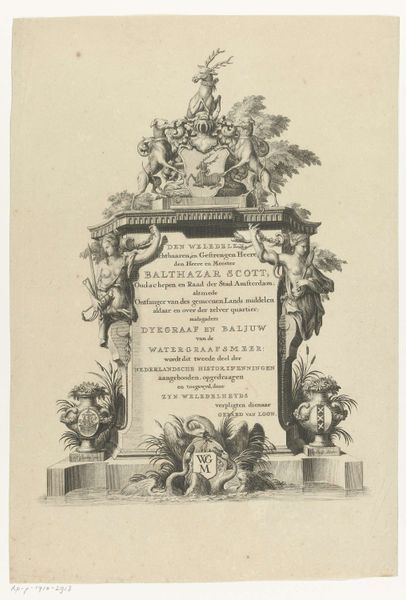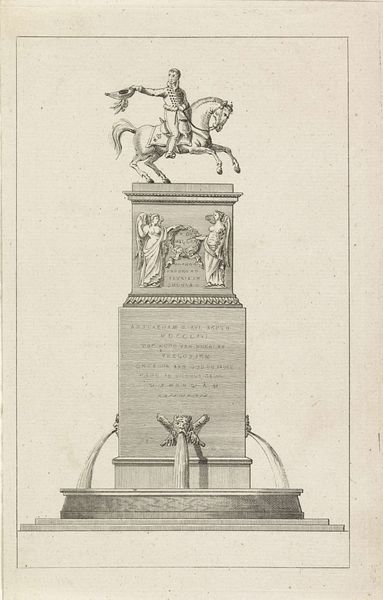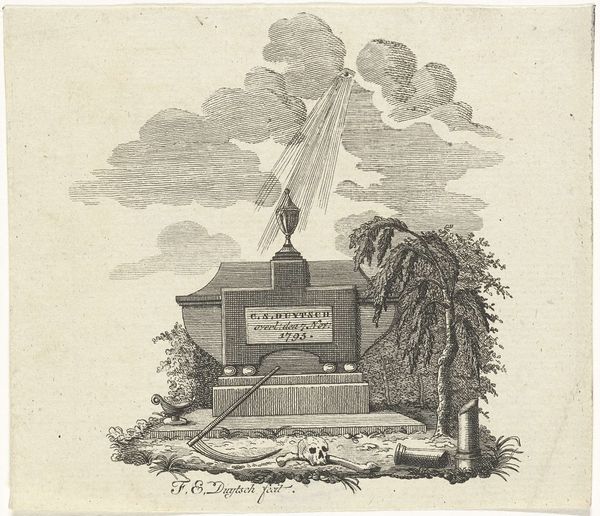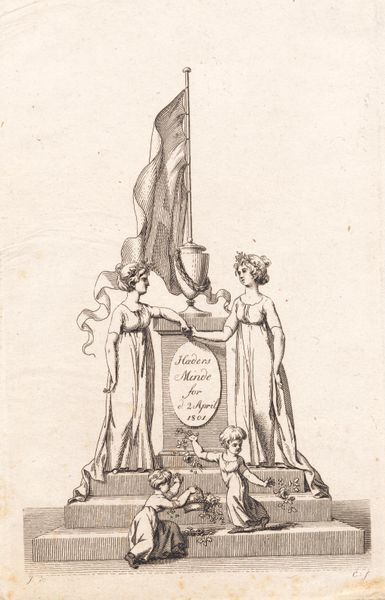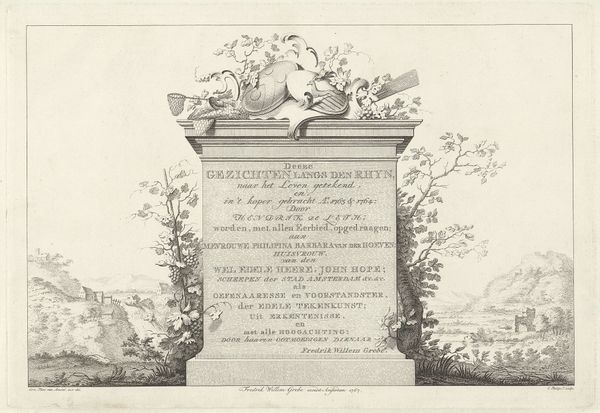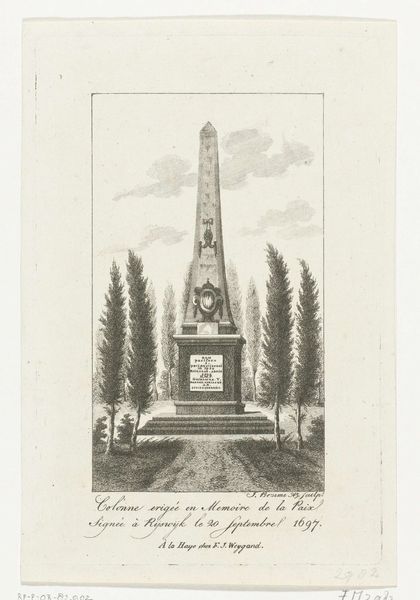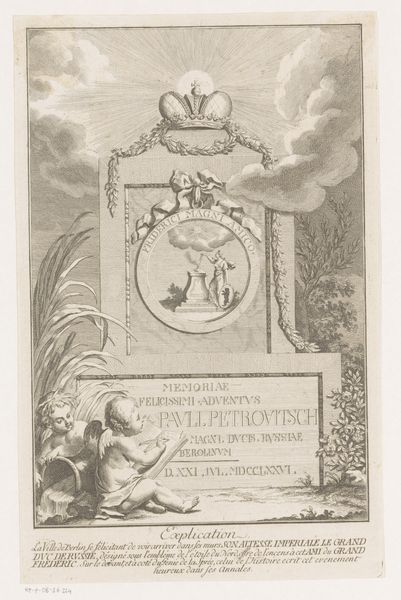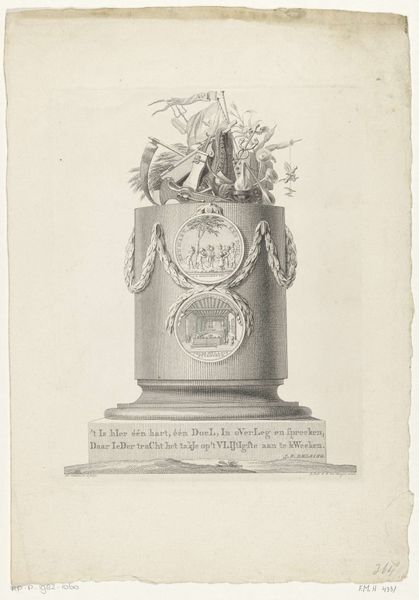
print, engraving
#
portrait
#
neoclacissism
# print
#
old engraving style
#
history-painting
#
engraving
Dimensions: height 220 mm, width 145 mm
Copyright: Rijks Museum: Open Domain
This print, commemorating Hendrik Danielsz Hooft, was made in 1794 by an anonymous artist. It shows a highly conventional monument, complete with cherubs, portrait medallions, and skulls. We can understand it better if we place it in the context of the Dutch Republic during the late 18th century. Civic virtue and patriotism were frequently represented through symbolic imagery, often drawing upon classical motifs. Monuments like this one served to publicly honor individuals, but they also reinforced social values. The design incorporates elements that would have been readily understood by its contemporary audience. Medallion portraits of the deceased were common, as were the allegorical figures of cherubs to represent remembrance. Even the skulls have cultural meaning, reminding viewers that even the most virtuous among us are mortal. Art historians rely on a range of resources to understand pieces like this, from period documents to studies of social and intellectual history.
Comments
No comments
Be the first to comment and join the conversation on the ultimate creative platform.
